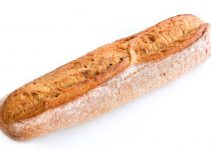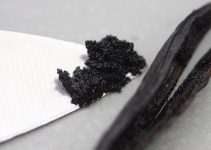The answer to the question what is strong flour is quite straightforward: usually it is bread flour or the type with the highest content of protein. Or hard flour.
One type goes by three names: strong, hard, and bread flour. These are all the same. They all indicate the absolute same products.
I already wrote a post talking all about the two types of bread flour so, you can also check it out there.
But I also wanted to answer the question of what is strong flour because people might think there are two different things.
They’re really not. If you already know all about bread flour and the two main types, you can stop reading now. Or stick around and see if there is some new info that you might discover in this article. Maybe something to help you bake even more delicious products.
Contents
What Is Strong Flour? What Defines It?
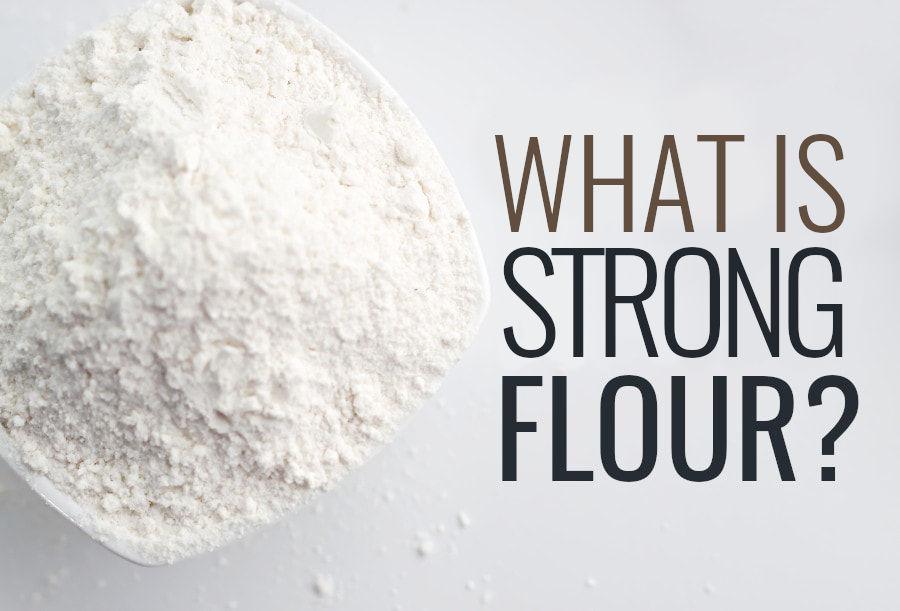
In order to better understand how things are, let’s see why it goes by three names: hard, bread and strong, when they’re referring to the exact same products. Well, you’ll find the noun bread written on the packaging of many manufacturers but you might not find any mention of the word strong or the word hard.
It is called strong because, among all the flours, it has the highest content of protein. Protein is that thing that forms gluten after being mixed with water and yeast.
Gluten is the substance that gives the breads their fluffiness and lightness. Without it, a loaf would be flat and dense.
Protein is found in the grains of wheat and related plants (rye, barley). That’s why, those who follow a gluten-free diet turn to almond, rice, oat, coconut, buckwheat, millet, sorghum, tapioca flour. These are just a few of the flours that are gluten-free, there are quite a lot of them.
Let’s talk protein numbers
Hard/bread/strong flour usually has a protein content between 11% and 13% for the white bread flour but it can go as high as 14% or 15% for whole wheat types.
On the other hand, all purpose flour has a protein content between 10% and 12%. As you can see, there can be intersection points between these two, if we’re strictly referring to the white kind.
It is why they’re interchangeable 1:1, unless we’re referring to whole wheat.
The Two Types of Strong Flour
There are indeed actually two types that fall under this strong umbrella and I’m pretty sure that you already know which they are:
- white – what most of us use and absolutely love
- whole wheat – what most of us strive to eat more of because it has fewer calories and we consider it to be healthier since it also has a high content of fibers, minerals, and vitamins
The white one is made from hard white wheat. Maybe that’s where the name hard flour comes from. But it can also be called strong flour.
Whole wheat has a higher protein content. It also gets that distinct color from the whole grain of the hard red wheat. That’s what it’s milled from.
Whole wheat is made from the entire wheat berry.
Wheat kernels have 3 components:
- endosperm (starch and protein)
- bran (the outer layer of the kernel)
- germ (all the fat, concentrates most of the flavor)
Combining and substituting
Since whole wheat is so dense, in recipes it tends to be combined with white or all purpose, usually 50-50.
Some even choose to combine 50% whole wheat, 25% strong white, 25% all purpose. You can make all sorts of experiments and combinations.
If you replace 25% of the flour to be used in a recipe with whole wheat, you won’t notice that much of a difference, whether we’re talking about color, texture or taste.
When you’re making substitutes, you need to remember that whole wheat weighs less than white. It’s one of the few situations where you’re better off measuring by cups and not with the use of a kitchen scale.
Moreover, whole wheat will absorb more liquid. You should notice when you knead if more water needs to be incorporated.
Is All Purpose Better than Bread Flour?
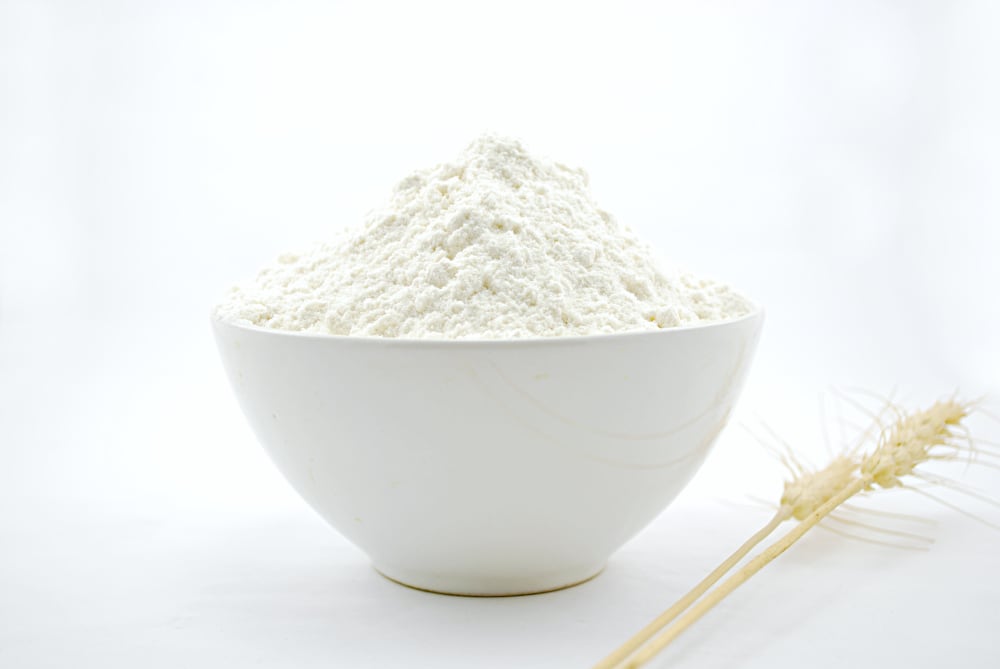
Since the all purpose type has a really decent amount of protein, it is often used in the making of different types of loaves.
In some cases, there are definitely bakers who prefer using a flour that doesn’t have as high a protein content as strong flour has. Then, they turn to using all purpose flour because it tolerates a long rise very well. It will produce a delicate crumb that can be easily digested.
If you’ve made a lot of French and Italian artisan recipes, you’ve already noticed that the use of all purpose is indicated by most recipes.
All purpose flour is excellent, which is why I consider it to be the most popular type. It’s so versatile: from breads to pizza to flatbreads to all kinds of desserts and pastry.
I prefer using white bread flour or whole wheat when I’m using my bread machine for making loaves.
But I’ve also replaced it with all purpose when I didn’t have anything else and it turned out just as delicious and with a very nice rise. The crust was just as nice and delicious.
Get the unbleached type
There’s also another characteristic that you should be aware of: unbleached flour.
Whether you’re getting white or all purpose, you should always get the unbleached ones.
Bleaching is a process that uses chemicals to remove the carotenoid pigments and make it look dazzling white. Well, we are all pretty leery of anything that involves chemical processing, especially when it comes to our raw ingredients.
I’m not going to comment on that. I’m just saying it because, through bleaching, it can lose some of that delicious flavor.
You won’t make breads or flatbreads or pizza or other baked goods taste as delicious as you want them to if you’re using bleached flour. That’s all.
Is Strong Flour Good for Pizza Dough?
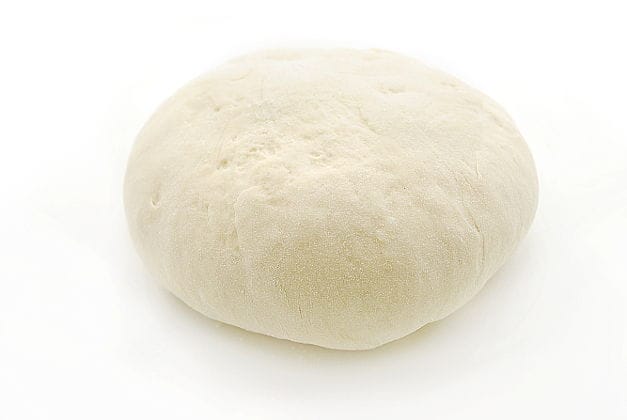
We can definitely spend a lifetime talking about different bakers and what type of flour they prefer when making pizza dough.
If we were to read The Elements of Pizza by Ken Forkish, we would discover that people in Naples actually use a strong flour that has 12.5 to 13.5% protein content. As we learned above, that qualifies as a strong flour. Although, in Italy, it’s called 00 flour.
It’s a wonderful, delicious, superb flour and you can also find in the US. It’s called Antimo Caputo Chefs Flour. They also have the Antimo Caputo Pizzeria Flour, which also has a high protein content, 12.5%. Some pizzerias choose to make a 50-50 mix of the two.
However, all purpose is always good for making pizza, there’s no doubt about it.
So, not only you know the answer to the question of what is strong flour but you also know that it works for pizza, too, at least if we get the Italian kind.


